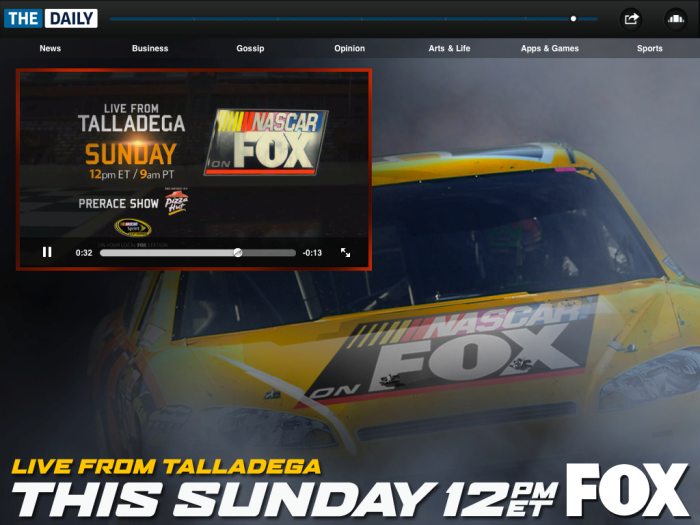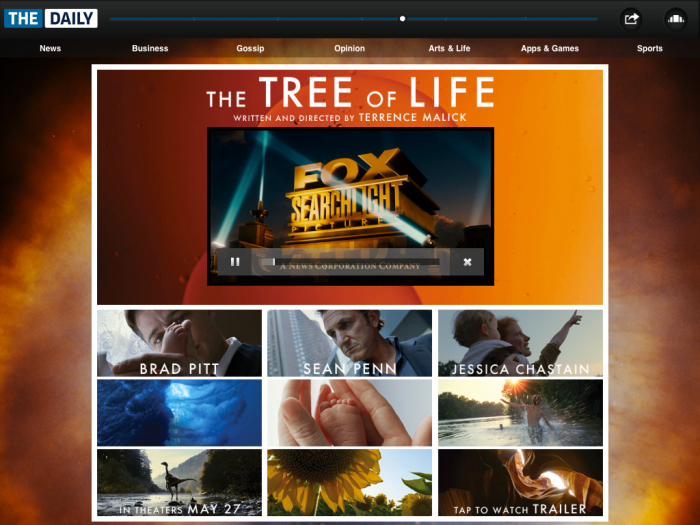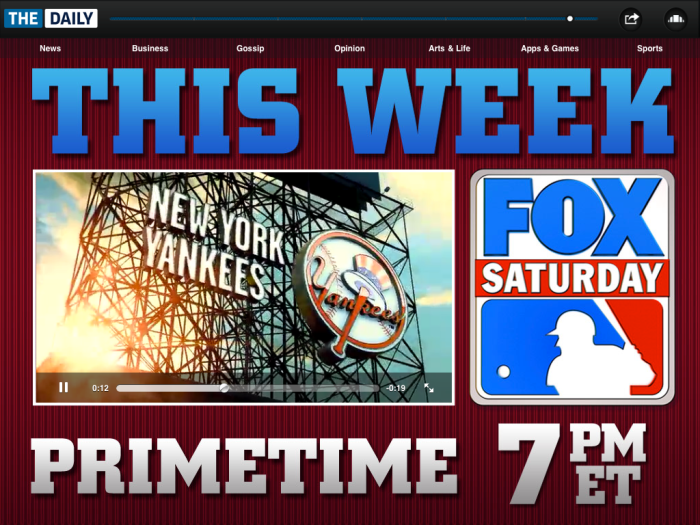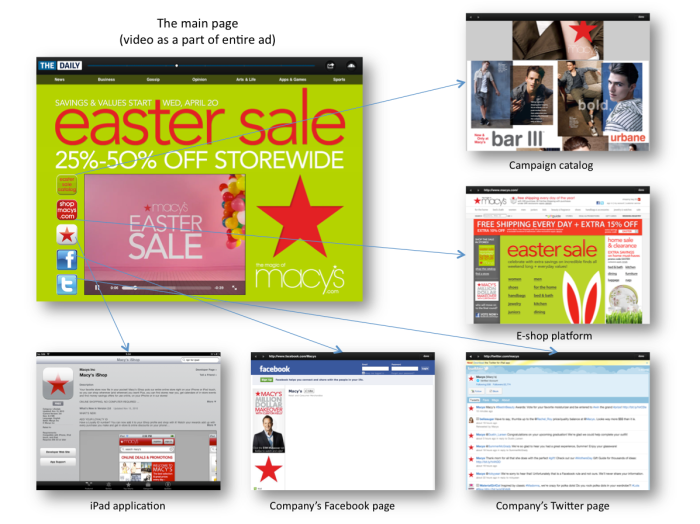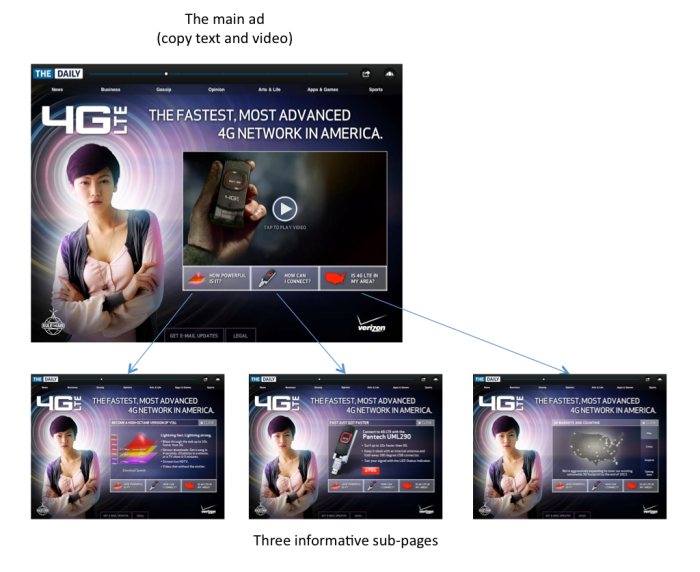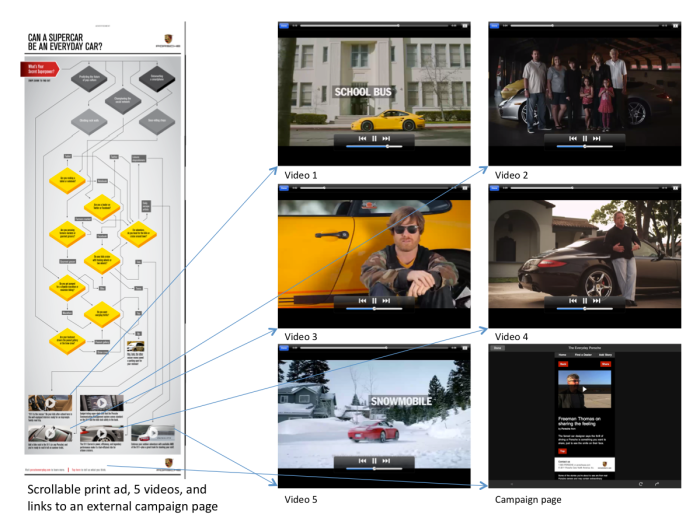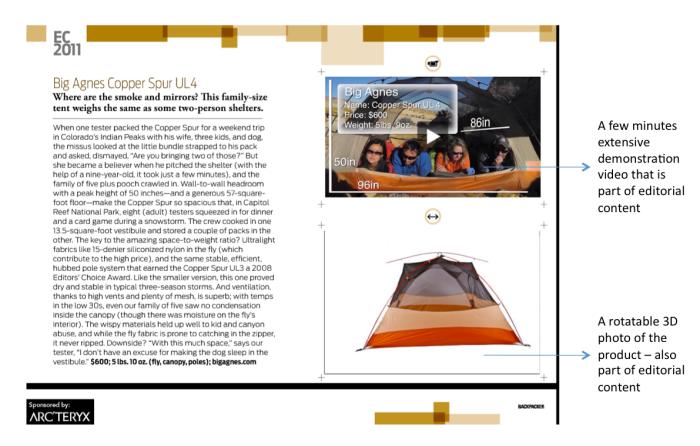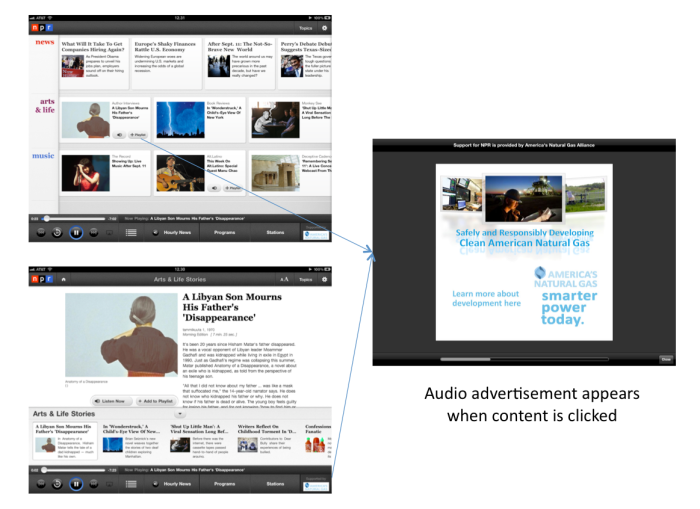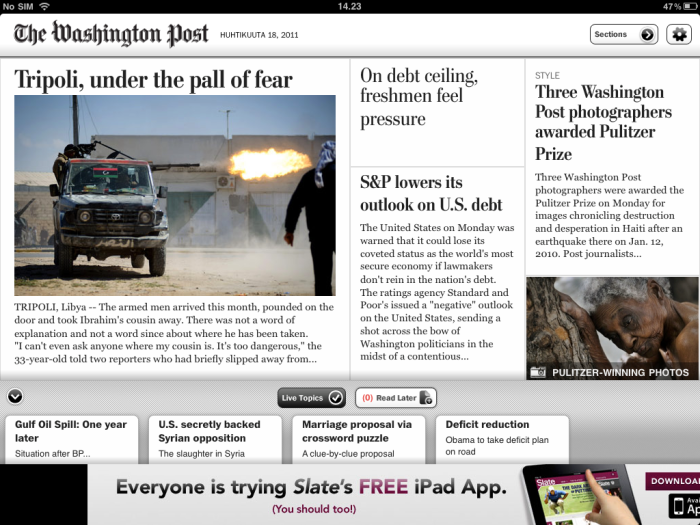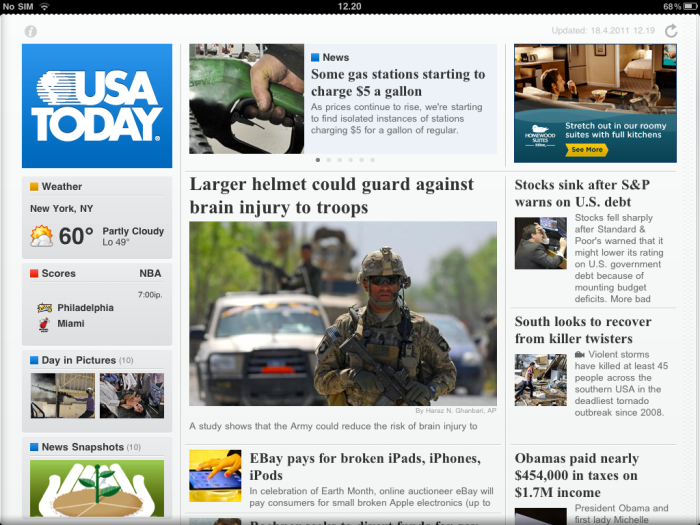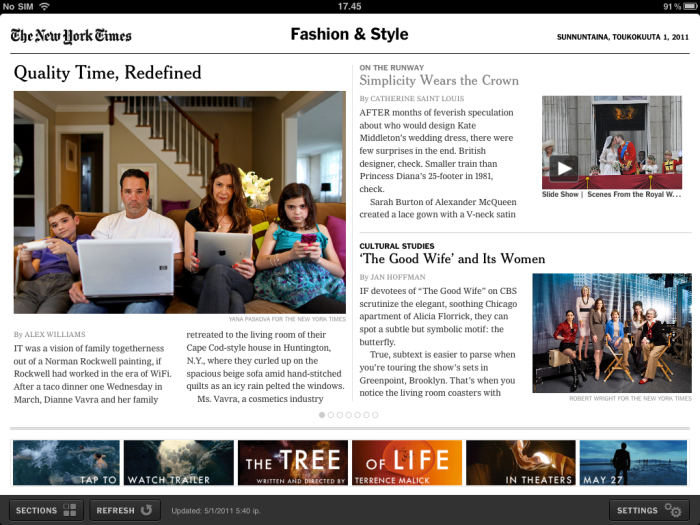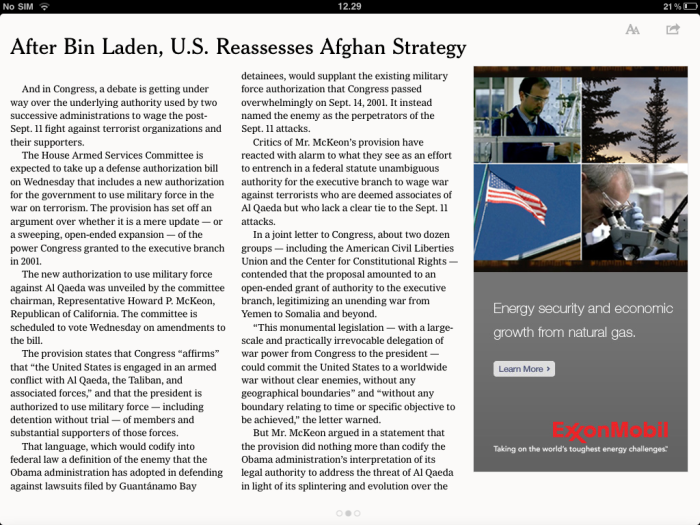Archive for September 2011
Advertising Types in Tablet/eReading Context – Videos, Audio Advertisements, and Banners
4. Videos
Videos seem to be a relatively popular form of advertising in the American eReading advertising context. Based on a benchmark analysis, it becomes evident that the role and prominence of videos can be categorized as follows:
1. Video only: the whole advertisement is designed based on a particular video, such as TV commercial or movie trailer (see Figures 13, 14, and 15).
2. Video as a part of entire ad: video is just a secondary element of an advertisement (see Figures 16 and 17).
When videos play a central part in an ad, the video frame is embedded in a HTML5-based ad that covers usually the whole page. These ads do not offer much functionality, content or links to other web pages but, rather, the main purpose of the ad is the video itself. These kinds of ads aim at promoting topical products and services, such as new TV series. In this sense, the video is a teaser that reminds the reader of something new. In particular, The Daily magazine utilizes this kind of advertising form distinctly in advertising; major TV companies, like Fox, are the advertisers. The underlying idea is that this kind of video-only ads could also function as independent TV ads. Hence, as the video itself offers all the essential information to consumers, any other kind of content is not necessary as it would not bring value-added to consumers.
Another possibility is to utilize videos as a part of entire advertising. Herein, the video is not the sole idea of the ad but, rather, the video supports the other elements of the ad. The purpose of the ad may, thus, be to, for instance, direct consumers to an online shop and the company’s social media website. In some circumstances, the video is embedded in an image ad meaning that the company’s image is being created through moving images instead of relying on plain print ad. It is also possible that the entire ad consists of several videos (Figure 18).
Besides above-mentioned video ads, also editorial videos are extremely interesting innovations in electronic magazines. In these ads, commercial goods are presented as a part of editorial content. Even if this kind of videos are fundamentally non-commercial – that is, part of overall content – they are executed in a very commercial manner (Figure 19). From the perspective of magazine publishers, this kind of editorial videos are central since they are seen as producing value-added for readers; instead of relying solely on sheer text- and image-based product assessments, products may be displayed and judged with the help of moving images. Yet, it may be unclear when one is dealing with a commercial video ads or editorial content since both the visual and technical quality of editorial videos is as excellent as in commercial ads.
5. Audio AdvertisementsEven though audio-form advertising may not be basically associated with the interests of newspaper or magazine publishers, it is still interesting to explore the diverse audio-based forms of advertising.
One of the most remarkable media organizations, that is distinctly utilizing audio advertising in tablet context, is National Public Radio (NPR). In the case of NPR, audio-based content – that is, news, articles and music – is provided to tablet users via distinct iPad application that is sponsored by a commercial party. In this particular case, there is only one advertiser at a time and the presence of a sponsor is noticeable both visually (both a small “support provided by” -banner at the down right corner of the front page and a full page pop-up advertisement appearing when clicking an audio content to be listened) and audio-wise (spoken audio advertisement appears automatically when clicking an audio content to be listened) (Figure 20).
Audio-based advertisements are a good example of how high-quality and multifaceted (audio) content is offered to consumers without consumers having to pay for it; the content is fully sponsored by companies.
Audio advertisements and sponsorship collaboration offer also possibilities for Finnish media houses who carry besides print media also audio media in their portfolios. Herein, it is possible to acknowledge the role and impact of audio ads in addition to print and video advertising when considering the total advertising palette.
6. Banners
Banners usually exist in contexts that structurally resemble traditional web pages. Some major newspapers in the U.S., such as USA Today, The New York Times, and The Washington Post, have built their eReading applications so that they resemble the newspaper’s online page rather than the physical newspaper. Therefore, the advertising of eReading applications is also congruent with other online advertising that takes place in the website (see Figures 21, 22, 23, and 24).
Traditional banners are an advertising form that are easy to implement in tablet media. This is due to the fact that several publishers have known the processes behind this type of advertisement for already two decades. However, since traditional banners are rather simple to execute, they do not fully utilize the visual and technical possibilities of tablet advertising; banner ads in tablets are often static and the message of the ad in a text form. Yet, some banners have external linkages to other websites. In these cases, a pop-up page or web-based campaign site opens up.
